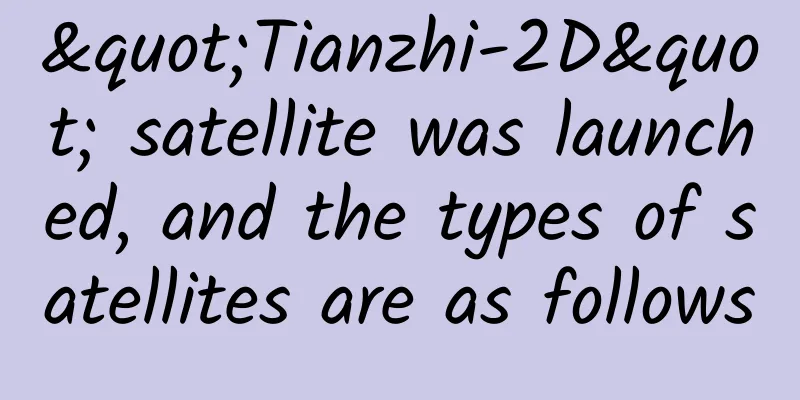"Tianzhi-2D" satellite was launched, and the types of satellites are as follows

|
China Science and Technology News Network, January 16 (Xu Qiqi) At 11:14 on January 15, the Long March 2 Dingyao 71 carrier rocket successfully launched the Qilu-2, Qilu-3, Luojia-3 01, Golden Bauhinia Satellites 3, 4, 6, Jilin-1 MF02A 03, 04, 07, Gaofen 03D 34, Haihe-1, Wolfman, Beiyou-1, and Tianzhi-2D satellites into the predetermined orbit at the Taiyuan Satellite Launch Center, and the launch mission was a complete success. Artificial satellites are unmanned spacecraft orbiting the Earth or other planets. Artificial satellites can be divided into three categories: scientific satellites, application satellites and technical test satellites. Scientific satellites are satellites used for scientific exploration and research. They can study and detect the atmosphere, radiation belts, magnetosphere, cosmic rays, solar radiation, etc. of a planet. The satellites are equipped with various detection instruments. Through the data collected by scientific satellites, humans can better understand the universe. The mission of application satellites is to provide practical business applications on the ground. There are many types of application satellites, mainly including navigation satellites, communication satellites, and observation satellites, which can be subdivided into more than ten types. A technology test satellite is a satellite that tests new technologies or conducts tests for application satellites. Some countries will test some new or complex technologies on application satellites on technology test satellites, and then use them on application satellites after they are successful. The content of technology test satellite tests is very wide, including manned spacecraft life support systems, rendezvous and docking tests, mobile communication tests, etc. Satellites are now on the road to becoming more intelligent. According to Science and Technology Daily, the Tianzhi-2D satellite has realized full deployment on a unified micro-cloud computing platform for the first time, which in turn drives intelligent scheduling and computing, and no longer has separate satellite services, attitude control, data management and other subsystems. The Tianzhi software stack with an open system architecture makes it highly open. |
<<: "How did a deer from across the ocean end up on our national emblem?"
>>: Beware of "holiday sickness", you need to know these scientific medication knowledge!
Recommend
8 copywriting improvement methods to help you quickly improve user experience
The interface copy mentioned here mainly refers t...
Zhihu information flow: a "small trend" in advertising promotion and marketing in 2019!
On the first day of 2019, Luo Zhenyu's New Ye...
Car companies are accelerating their layout of shared cars, but they still face difficulties such as profitability
The number of participants in the car-sharing sec...
Tsinghua University Research: AI is 3,000 times faster than humans in planning urban space!
Today, human designers also have AI partners in t...
New media operation: How to build a self-media matrix?
Many students would say: It’s 2020, can self-medi...
An article to understand the product logic and strategic layout behind the Alipay 9.0 revision
[[140494]] About the Alipay 9.0 revision: If you ...
Android 12 is expected to allow users to share WiFi passwords through the "Nearby Share" feature
We know that with Android 10, users can easily sh...
Tavistock short-term dynamic therapy twelve-lecture online course complete set of materials
Tavistock Short-Term Dynamic Therapy 12-Lecture O...
In the era of isolation, how can facial and fingerprint recognition “previous to failure”?
With only one month left until the end of 2020, d...
The latest regulations on registering the third child: What materials are required? Is a birth certificate necessary?
It took only five years for my country to go from...
How to save bidding promotion costs? How to adjust the bidding promotion cost if it is too high?
In the past, I was mainly responsible for optimiz...
Starlink satellites dangerously approached the Chinese space station twice. How to avoid space conflicts?
On June 1, 2022, Zhang Zhihui, associate research...
How to take a “natural photo” of the earth?
Author: Wang Su (Institute of Atmospheric Physics...
With the support of security chips, Android data encryption is becoming increasingly difficult to steal
Background of Android FBE In this article, we wil...
What impact will the major App Store revision have on Apple’s ecosystem?
At the WWDC 2017, which lasted more than two hour...









